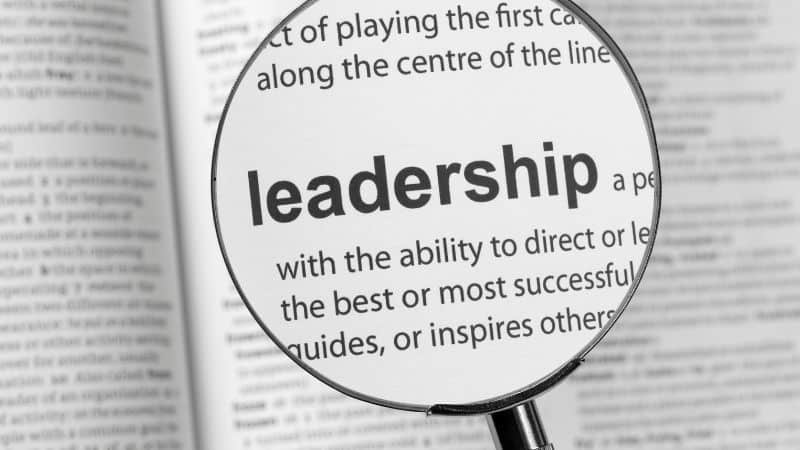Good leadership is important. Good leadership improves morale, engages people, builds trusting relationships, inspires confidence, enables innovation, and more. Because of leadership, people come together to make things happen.
Famous leadership expert John Maxwell said, “Everything rises and falls on leadership.” I agree. And this is why leadership is of utmost importance. Without it, even the most prominent organizations in the world will fall. With it, the impossible becomes possible.
🚀 Great leaders don’t just happen—they’re built, trained, and tested. Our leadership program gives you the blueprint to build the leader within. Ready to get started?”
Why Leadership Is Important
In the world of work, the value of leadership is very evident. I will discuss each of the five reasons why leadership is important.

Good leaders boost morale.
In a VUCA world, people must know that you care for them. Malasakit is a superpower. And compassionate leaders show that they understand people.
VUCA stands for volatile, uncertain, complex, and ambiguous. A century ago, progress moves very slowly. Things are stable. You can come up with a product that you can sell for decades.
These days a product can be obsolete after a year. That’s because it is easier to invent new things. These are exciting times. But may get motivated. Leadership can help improve morale.
Many things are uncertain and complex. For example, our experience with the Covid-19 pandemic showed us that though the information is everywhere, there is still much that we don’t know. We were clueless about how to handle people who were working from home. We did not know how to keep and improve productivity. Leadership that understands and connects saves the day.
People were confused. Things were ambiguous. There were good things, and there were bad things happening.
The pandemic is almost over, but we are still swimming in a VUCA world.
When people are not in control, they become afraid. Leadership helps people to control what they can. And that can be done with people having confidence in their leaders.
People do not care what you know until they know that you care. I’ve said this many times because I am one of those who look up to leaders who care for people.
Sure, I’ve seen leaders who chose to build walls between themselves and the people they lead. Somehow, they got advice from others. They were told that to be respected, they must create a wall that says, “I am a supervision and you are my direct reports and we are not equal.”
This is not based on science, of course.
It also shows a lack of knowledge about the personal power of a leader. It is important for people to know and feel that you see them as people, that they are important, that there is no wall between you, and that you belong to one team.
And in that team, you are the leader.

Good leaders engage people.
People are committed to giving their best at work because leaders make them feel important. They know their vision, purpose, and the impact of what they do. Engaging leaders keep people motivated and enable them to deliver excellent work.
In volunteer organizations, engaging leaders make people win every time. Every volunteer organization can only last a week in the presence of inspiring leaders. Don’t worry if you are not an inspiring leader because on this website you will find resources and access to leadership training programs.
What do I mean when I encourage you to engage people?
This is a huge topic, and perhaps, I must write a series of articles on employee engagement. When I talk to HR professionals, I notice that there is no one common understanding.
Employee engagement is about creating opportunities for people to find meaning, freedom, and success in what they do. This is not just about improving performance and productivity. Employee engagement is about helping employees succeed.
A good leader who engages people knows the dreams and aspirations of people. They know their strengths, talents, and passion. And at times, they sell to people their potential so they can bring out the best in them.
A good leader who engages people provides them with opportunities to choose winning attitudes and develop vital behaviors for success.
If you have a few minutes, visit my 20 actionable pieces of advice on how to build teams for success.

Good leaders build trusting relationships.
Leaders bring people with different backgrounds, skills, and talents together. They are the bridges from one person to another.
It is a common mistake to think that everyone follows the leader. An organization is a living organism. Leaders connect people to a common purpose. But more than that, they find ways to build trust between people.
Trust is the glue that binds people.
In the context of leadership, trust refers to the belief that leaders act in the best interest of their teams, are honest and transparent in their communication, and follow through on their commitments.
These leaders are expected to walk the talk and have what it takes to deliver what they promised.
Filipinos give their tiwala (trust) to their leaders based on an agreement. Those who do not deliver what they promised are either palpak (incompetent) and tiwali (corrupt).
Most of us have to earn the trust of people. And we do that by fulfilling our promises. People expect us to practice what we preach and lead by example.
Many workplace professionals complain about bosses who are unfair and indecisive. To lose their trust, you only need to show that your rules keep changing.
It was said that the strength of a chain is in the weakest link.
Most people think that the weakest link refers to the ability of an individual member of a team. In truth, the chain is weakest when people don’t trust their leaders. The lack of trust is like rust that eats the chain.

Good leaders inspire confidence.
Leaders sell employees their capabilities to make things happen. They do this by enabling and engaging their employees. They become trainers, mentors, and inspirations.
Effective leaders allow people to make small wins as they look forward to the big wins.
Leadership is important because people need it when they are discouraged. Your ability to motivate people to try new things and help them win builds confidence.
I first thought about it when I was a teacher.
To inspire confidence in students, it is not enough to show them what’s possible and how capable they are to make the possible real. I need to make them experience success, one small step at a time.
I allow them to experience one small success on top of another.
For example, I know big projects overwhelm people. When I give them a 90-day project, it is likely that they’ll procrastinate. They’ll try to ask for an extension a day or two before the deadline. If I deny any extension, they’ll cram.
They’ll submit projects which are mediocre at best.
The pattern is the same for 90-day, 45-day, 15-day, and 5-day projects.
Most school projects can be done in less than five days, of course.
So, I divided the projects into three to five segments. I give a deadline for each segment, and students could move to the next unless they were done with the first segment.
But here’s something that worked.
I allowed them to submit days before the deadline. I told them that doing so can give me time to check on their work and give my suggestions for improvement. Then, they can improve the work and resubmit before the deadline.
It is typical for someone who is likely to get an 80 (draft) to eventually get to 95 and above (final work). Without doing this, most final works submitted by students have the qualities of the first draft. I made submitting ahead of time desirable. I allowed them to experience small successes so they gained confidence.
It requires more work from the teacher. It requires more work also from the students.
But they learned how to choose excellence over mediocrity.
Managers and supervisors can do the same with employees.
Of course, you will get a lot of objections from smart people. They’ll say that everyone is too busy to do the work. There is not much time for small things.
But you know that most people spend 80 percent of their time on less productive work.
And you know also that when people focus on what matters and have the skills to deliver them, they can do much work faster.
Some people spend many nights thinking about a speech to deliver. And terrified knowing that they’ll fail. Others, those who have experience and confidence, can think on their feet. They can deliver speeches anytime, anywhere, and to anyone.
Help people do something, even small ones, that help them experience success. Allow them to gain confidence.
There’s another thing you can do to inspire confidence.
Show the way. Demonstrate your willingness to learn something new.
For example, if you are one of those who are afraid to speak in front of a crowd, find organizations that will help you become more confident. You don’t need a lifetime to learn that. You can join Toastmasters, for example.
What’s important is you allow people to know that you are willing to do what you are telling them to do. Show them how you celebrate small successes too.
Your intention is to do great work every time. And to learn every time you fail.

Good leaders enable innovation.
A good leader challenges the process. They look for ways to make things better, cheaper, bigger, easier, faster, or more valuable. We live in an ever-evolving world. The leaders who thrive are those who enable turn employees into creators.
As you read How to Grow Your Leadership and the Five Practices of Exemplary Leaders, consider the impact you can make as a leader.
Good leaders ensure accountability.
Good leaders hold themselves and their people accountable. They encourage responsibility, integrity, and ownership — and these ensure that they produce the best results.
Many people don’t want to accept accountability. Because it is usually mentioned when problems happen and people are looking for someone to blame.
It is easy to claim success.
But it does not feel good to be blamed for everything.
Good leaders do not look for accountability after the fact. They ensure accountability before a project is done. It is a who before how. And this ensures people know who’s going to do what at any given time.
Imagine how we do it in bayanihan. One example is that of transferring a house from one location to another. Everyone has a place in that project. They are distributed so as to ensure that everything goes well.
You may not find the leader in photos, but he is there ensuring that everyone’s cadence is synced and they walk in the same direction.
Accountability is key to success. And good leaders who hold themselves and people accountable are more likely to be successful than others.
Good leaders turn conflict into collaboration.
Many managers avoid conflict. They say that they don’t want any trouble. It is true that conflict, when not managed well, spells trouble.
Conflict in any team or organization is inevitable.
Disagreements, different viewpoints, or competition can cause conflict. If not handled properly, conflict can lead to productivity loss and a toxic work environment.
However, with good leadership in place, conflict can be transformed into opportunities for collaboration. Conflict can lead to creative solutions and strengthen team relationships.
Good leaders possess the essential skills to turn disagreements into collaborative conversations. Instead of allowing the conflict to escalate, they approach it with a solution-oriented mindset.
They encourage open communication, enabling every team member to express their thoughts and concerns.
They respect the diversity of opinions and value the insight that each perspective provides.
Good leaders cultivate an open and respectful environment. Leaders can convert contentious situations into collaborative problem-solving sessions.
In one of my coaching sessions, a supervisor shared how direct reports quarrel a lot. She felt that they sabotaged each other’s performance.
So, I taught her how to employ conflict resolution strategies that not only resolve the issue at hand but also build stronger relationships among team members.
She facilitated mediation and promoted empathetic listening and understanding. Because of this, she addressed immediate disagreements and nurtured a culture of mutual respect and trust within the team.
When team members trust each other and their leader, they are more likely to collaborate effectively in the future.
What I did is not much, really. I taught here simple steps. It was she who made things happen. She took the courage to resolve conflicts and help everyone collaborate.
Good leaders set themselves as role models.
A manager told me that they don’t have a leadership development training program. She was referring to the intervention provided to employees.
I asked her why they needed one. She answered by enumerating to me all the challenges they have with “incompetent” leaders.
People are not productive and they have not met their goals for the last six quarters.
She requested a proposal. But her boss rejected it because they have no budget for leadership development.
The company closed before the pandemic.
I am sharing this because many people have misconceptions about leadership development.
You are always building and developing leaders. And this is done by the most influential approach: leading by example.
Whatever leaders do, employees learn.
This is why good leadership is important.
Leading by example is a cornerstone of successful leadership and is integral to both the growth of employees and the overall organization.
When leaders exemplify the values, behaviors, and attitudes they want to instill in their team, they demonstrate their expectations not just in words but in action.
Modeling facilitates the development of a positive and productive organizational culture.
Leaders who model desired behaviors encourage those same behaviors in their teams. When a leader consistently demonstrates honesty, integrity, commitment, and respect, they set a standard that their team is likely to follow.
Behavior modeling can significantly influence an employee’s attitude toward their work and their interaction with others. It encourages a high level of professionalism and respect within the team.
Good modeling enhances interpersonal relationships and creates a harmonious working environment.
And as mentioned before, good leaders who lead by example foster trust within their teams. When leaders’ actions are aligned with their words, they strengthen their credibility and authenticity.
Team members are more likely to trust and respect a leader who “walks the talk”, and this trust can greatly enhance communication, cooperation, and overall team performance.
Of course, I will encourage you to be mindful of leadership development. I will help you.
Explore the training for leaders you can find on this website. Remember, the best training is that which is designed for your company.
Good leaders model the way. You’ve got to bring out the best in leaders and allow them to experience it every day.
Resources
FAQs
Leadership Skills Are Important Too!
Developing leadership skills is essential for everyone, regardless of their role. These skills allow individuals to make confident decisions and communicate effectively. They’re not just about being in charge, but about setting clear goals and inspiring others.
In a world focused on teamwork and collaboration, leadership skills are invaluable.
Leadership skills also enable individuals to navigate change and address challenges creatively. They promote resilience and adaptability, traits necessary in our fast-paced world. When facing the unexpected, leadership skills help us to remain composed, assess the situation, and make informed decisions.
It’s not solely about personal success. Strong leadership skills improve productivity, facilitate better decision-making, and can contribute to a more harmonious society. By developing these skills, individuals can make a positive impact on the world around them. You will find below the links to training programs that build leadership mindset and skills.
I also invite you to read the 10 Strategic Skills for Leaders which will become more valuable as technology advances. Then, explore the 28 leadership skills you can build and develop.












